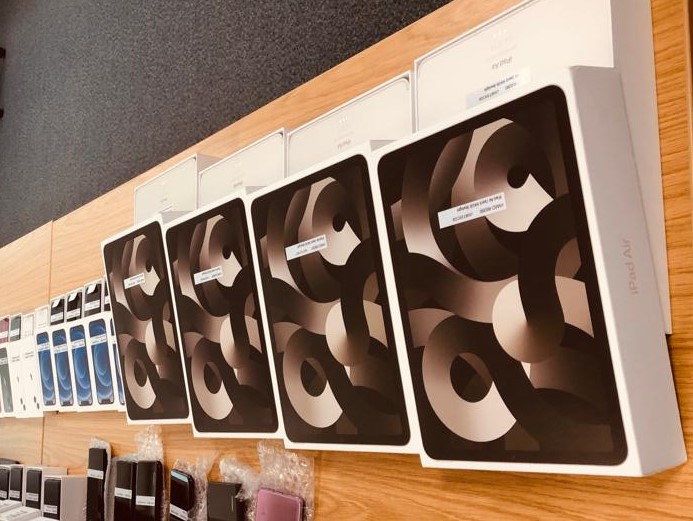Walid Hbeika, Chief Technologist & Strategist at Micro Focus Professional Services, explains why mobile application testing is critical to meeting customers’ high expectations. A mobile device farm can help you meet their demands with more efficient, realistic testing.
In the northern hemisphere, it’s harvest time for farmers. Crops from the summer months are ready for their journey from field to market. As a winemaker, I always get excited for the grape harvest so I can start producing tasty bottles of wine.
In technology, we use the concept of the farm to support large-scale harvesting of dedicated machine resources. One example growing in popularity is the mobile device farm, which makes application testing more scalable, realistic, and efficient. Effective mobile testing is crucial as consumer expectations grow and delivery timetables shrink. Let’s look at the benefits and how you can get started.
High Expectations for Mobile Apps
We’re pretty impatient with our mobile apps. If your go-to rideshare app isn’t working, you can easily download a competitor’s app. Unless an application delivers a niche service, we have plenty of options for streaming, banking, shopping, etc.
In such a crowded, competitive market, you need to deliver releases quickly while ensuring your mobile apps exceed customer expectations. But how? Applications must work on multiple device types and operating systems, which can make testing a complex, time-consuming process.
Leveraging a mobile device farm for application testing can result in high quality without slowing down your delivery timelines.
What Is a Mobile Device Farm?
Maybe you’ve heard of computer farms at some point. Picture endless rows of powerful computers in boundless and windowless data centers. Mobile device farms essentially follow the same setup but are less common. They consist of a pool of dozens or hundreds of different kinds of mobile devices.
How Do Mobile Device Farms Work?
The pool of mobile devices can be remotely accessed and controlled to support testing activities. Whether it’s a manual test case or an automated script, a user can select many devices at once to test. Imagine a set of automated tests running simultaneously on ten, twenty, or more devices. The output is a report indicating which test cases failed on which devices.
Because you’re testing on physical devices instead of emulators, mobile device farms provide a more realistic context for quality and performance. But they also present challenges of their own.
What Are the Challenges of a Mobile Device Farm?
A mobile device used for testing does not have the same lifespan as a mobile device for personal use. Test devices are tethered to charging and communicating cables 24/7, which wears out the internal components faster. Managing such a setup is anything but pleasant.
Each device is connected via a USB cable to a large hub, which in turn is connected to a host computer. Replicate that setup 20 times, and you end up with a cascade of hubs, a plethora of mobile devices, and a network of USB cables that look like semi-organized spaghetti.
Size isn’t the only challenge. The setup must be in a secure location. The obvious choice is to put it in a data center. However, most data centers don’t want to host mobile devices due to safety and security issues.
Setting up the wireless communication channels required for a device farm opens data centers to the risk of information theft. Plus, mobile devices have fragile designs and sensitive power sources. Left unchecked, a battery charging 24/7 will eventually heat up, expand, crack the display, and potentially leak—creating a serious fire hazard.
Meet Our New Mobile Device Hosting Service
Sometimes, you need outside help to make a farm work. It would be impossible for me to make the wine I do without help from those harvesting the grapes. It’s the same with mobile device farms. Your mobile application developers and testers have more important things to do than manage safety and reliability for an onsite device farm.
And that’s where Micro Focus Professional Services can help. The Mobile Device Hosting Service is an add-on facility that complements your Micro Focus UFT Mobile installations. Our proven testing solution remotely controls mobile devices, amongst other functions, offering a turnkey service. Unlike public device farms, we provide a private cloud solution where no components are shared with other tenants.
Our dedicated support organization doesn’t just focus on ensuring the proper functionality of the setup. They also provide, what I like to call, a “built-in concierge service.” Does your team need help with a challenging script? What about a walkthrough of new features? Or maybe the onboarding of new teammates through some mentoring sessions would be helpful. We can do all of that.
Providing these personal touches is certainly not typical of similar solutions or third-party setups. Our goal is to provide a service that supports and adapts to your current and future mobile application testing needs.
Get Started with Mobile Application Testing
Mobile device farms can make your application testing more efficient, leading to high-quality apps that delight your customers. To avoid management challenges, leave the farming to us. You’ll still harvest the benefits of a mobile device farm without all the dirty work. That’s something we can all raise a glass to. Find out more by reading the Service Data Sheet or visiting our UFT Mobile product page.

